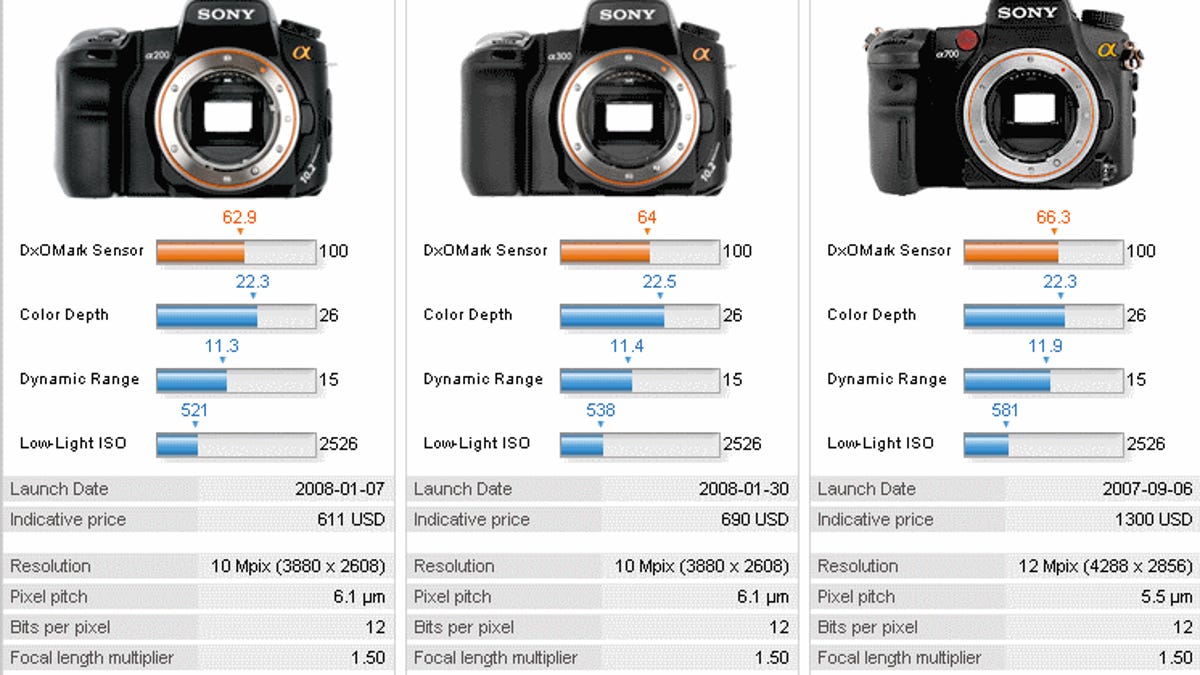Sony SLR sensor ranks below Nikon, above Canon
A test of the sensors in Sony's midrange SLRs shows the electronics giant to be competitive with rivals.
Three midrange Sony SLRs now are included in DxO Labs' measurements of image sensor performance, and the Alpha A700 proves to be reasonably competitive.
Sony's A700, which costs about $1,100 with an 18-70mm lens, has a score of 66.3 on the test, which calculates how well the sensor handles color, a range brightness and darkness, and low-light shooting. That puts it behind the top-scoring camera with a comparably sized sensor, the Nikon D90, almost ties it with the Pentax K10D and Nikon D300, and gives it a a few points' lead over Canon's 40D and 50D.
Meanwhile, the A200 scores 62.9 and the A300 an even 64, according to the DxOMark Sensor test results that were updated Tuesday. A five-point difference makes a difference of about 1/3 stop in exposure, DxO says, meaning that a higher-scoring camera can attain the same raw image quality as a rival even though the higher-scoring camera is using a faster exposure or higher ISO.
DxO Labs, a French company, makes a business of measuring camera image quality, developing technology for image-processing hardware and software, and selling software to convert the raw files produced by higher-end cameras into less flexible but more convenient formats such as JPEG. The DxOMark score measures sensor performance based on the raw file, a foundation for overall image quality but only a facet of a camera's overall performance.
The company postponed scoring the A700 because until the newer version 4.0 of its firmware, the camera performed noise-reduction processing on the green light captured by the sensor before generating the raw file. DxO frowns upon cameras reducing noise before the raw file is produced, in part because it misses out on steady improvements in software such as Photoshop that can convert raw images.
DxO's scores haven't been met with universal acclaim. In response to some criticisms and in an attempt to dispel some confusion, DxO has published a boiled-down DxOMark Sensor explanation.
For example, the company has this to say about sensor resolution, an issue that arose when comparing medium-format cameras with large, high-resolution sensors to high-end SLRs: "DxOMark Sensor and resolution are two independent metrics of sensor performance. As a consequence, just because camera A has more pixels than camera B (and thus sees more details) does not mean that its raw DxOMark Sensor score will be better. So before comparing cameras with DxOMark Sensor, it is important to first determine the resolution you are looking for."
The company also offers a more detailed DxOMark frequently asked questions page.


